

If you've been a part of the social media marketing landscape for a while, you're no stranger to the fact that this industry changes. A lot.
For those of you who are new, the constantly changing digital media marketing landscape can be pretty darn intimidating.
Where do you start?
What aspects are going to determine your success?
And why the heck is it all so confusing?
Listen, I hear you.
With all the conflicting information out there, it's easy to get confused.
As if that wasn't enough, actually turning that information into a social media marketing campaign can be an exercise in frustration.
That's why I've decided to take a stand.
Marketing experts have the bad habit of making topics more complicated than they need to be.
In an effort to provide people with as much information as possible, they end up overloading industry newcomers and leaving them with more questions than they started with.
Today, we're going to cut through all the noise and get to the heart of effective social media marketing.
There are plenty of things that you can do with social media marketing. But today, we're going to talk about the things you need to do.
Automation: The foundation of efficiencyLike most marketing efforts, your foundation is going to end up determining the overall success of your campaign.
And for the average business owner today, automation is going to impact exactly how efficient and effective your marketing efforts are.
Right off the bat, let me say this.
I know there are already some people who'll read this far, see the word 'automation,' and only focus on that.
Make no mistake: Automation is a powerful tool. But it can't be the only dimension to your social media marketing campaign.
There are other critical steps that you'll need to take (which we'll discuss further below), and ignoring them can leave your social media presence in bad shape.
Alright, now that we've gotten that little disclaimer out of the way, it's time to get into the fun stuff!
The easiest way to think about automation is to look at it in terms of times when you could allow tools to do your marketing for you.
Obviously, there aren't any marketing tools that can write a blog post yet. But for the vast majority of marketing activities that you need to do, you'll be able to find a tool that handles it.
One of my favorite examples? Tools that post content for you.
Buffer has a fantastic social media management tool that has a pretty impressive list of features.


And with over 4 million users, you can bet that they know what they're doing.
I've gone on record about the importance of maintaining a content schedule.
But something that I think gets overlooked is the importance of consistency within that content schedule.

In order to develop brand loyalty and eventually be seen as an online authority, you're going to need to be reliable.
But what if I told you that you didn't have to stress out about that anymore?
That's right: there are a variety of tools that will post at designated times for you.
If Buffer's not your speed, HubSpot has some impressive social media software for small businesses.

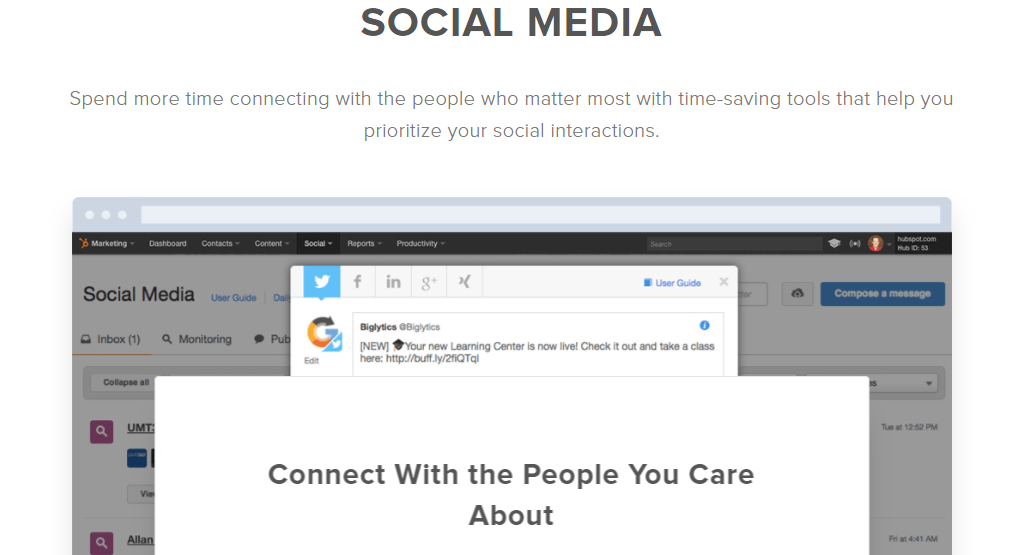
It's not just about freedom from worry. It's about freedom from complexity.
The less you have to worry about your posting schedule, the easier it will be to focus on the other aspects of your marketing efforts.
Creating evergreen contentSpeaking of other marketing efforts, let's get into the topic of evergreen content and its role in social media marketing.
For those of you who are unfamiliar, evergreen content can be described as content that will always be relevant to your audience, no matter how the industry landscape changes in the future.
"But Neil, wouldn't this topic be more suited for a content marketing article?"
Okay, you caught me.

But if you ask me, evergreen content can be seen as relevant to both content marketing and social media marketing at the same time.
Alright, stay with me here.
The production of evergreen content is absolutely an aspect of content marketing — no question.
But the implementation of evergreen content is a social media marketing issue, as well, without a doubt!
And it doesn't all have to be ancient history either. I'm just promoting this article on Twitter again for anyone who missed it the first time around.

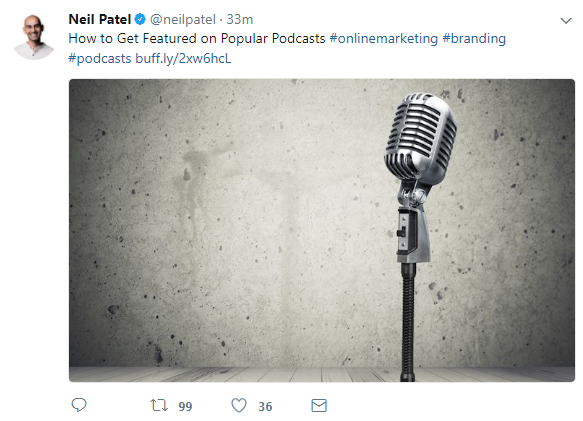
The reality of evergreen content is that it's at its most valuable when it's routinely being promoted on social media.
Sharing your most popular piece of evergreen content every few months or every thousand followers can provide tangible value while also getting your best content in front of fresh eyes.
Of course, the next logical question becomes, "How does evergreen content help me simplify?"

We all know how content production works. Even the most creative and ambitious among us have had the occasional writer's block.
It's hard to think of new ways to entertain or educate your audience.
There's no shame in it. Creating unique content on a regular basis is hard!
I should know. I'm not exactly slowing down production over here.


And creating mountains of unique content on a weekly or even daily basis is no easy task.
Which is why the creation of evergreen content is such an important part of having an effective social media marketing campaign.
Think of it this way. Imagine you needed to publish 4 pieces of content every week.
It'd be pretty great to have a catalog of content filled with so much evergreen content that you could repost an old piece of content every week, wouldn't it?
Suddenly you'd only have to create new content 3 times a week.
Evergreen content is how you ensure that, even when you're at your least productive, you'll always have some content to fall back on that your audience will enjoy.
And creating it isn't even that hard!

Let me tell you something. I guarantee that you're overthinking this.
The actual process is a lot easier than you might think.
If you're creating content that's entertaining people, the simplest way to create evergreen content is to avoid current events with some of your content.
Don't get me wrong —you should be creating content that's relevant to the experiences of your audience today.
But there are other ways to create entertaining content.
Just take a look at Saturday Night Live.


They do plenty of current-event sketches. It's hardly something they've shied away from over the years.
Here's one they recently posted on YouTube, with President Donald Trump being played by Alec Baldwin.


But amongst all of that, they've made sure to create content that has nothing to do with current events.
Why?
Because while current events might relate to your audience today, there's not much of a chance that it'll relate to them in six months or a year.
It makes your content seem dated, and that's the opposite of what evergreen content should hope to accomplish.
Current-events content is great for a short-term victory. Evergreen content is ideal for your long-term growth.
If you're working to create educational content, your solution is just as simple.
Reverse engineer the problems that people in your industry struggle with regularly.
Don't try to tie it to any current event. The problem you're solving should be something that'll need solving for the foreseeable future.
If you're running a blog that advises entrepreneurs, you could write an evergreen article on the topic of conducting interviews for future employees or how to build a business plan.
Just take a look at what Entrepreneur did, creating a step-by-step guide for their readers to follow.


If you're struggling, do what I do and work backward from the point of success.
I'll give you an example.
I want you to succeed when it comes to marketing your business, right?
So if I imagine that you're already successful, I stop and try to determine what hurdles you had to overcome to become successful.
You had to market your business somehow, so I ask myself what methods you might've used.
Did you use social media marketing? Were you using ads? Which kinds of ads? What determined your success with those ads?
Using this process, you'll eventually find dozens of different key components to success that you can focus on to create evergreen content.
Stop trying to post on every platformOkay, so if you've got an automated system in place that posts your content for you, this probably seems like it's not an issue.
Why worry about which platforms you're posting on when a marketing tool handles all of that for you?
But this is what I was warning you about earlier. The temptation to leave everything to automation can become overwhelming.
If we're focusing on efficiency, then we want to get the most bang for our buck.
If Facebook Ads are giving you twice the traffic that Instagram ads are, it wouldn't make much sense to use both equally, would it?
Of course not.
The same goes for posts that you promote on social media.
This is especially important for those of you who are reading this with a limited marketing budget and who can't afford fancy marketing tools.
Listen to me very carefully. If your audience isn't on Google+, then don't bother worrying about it. I certainly didn't.

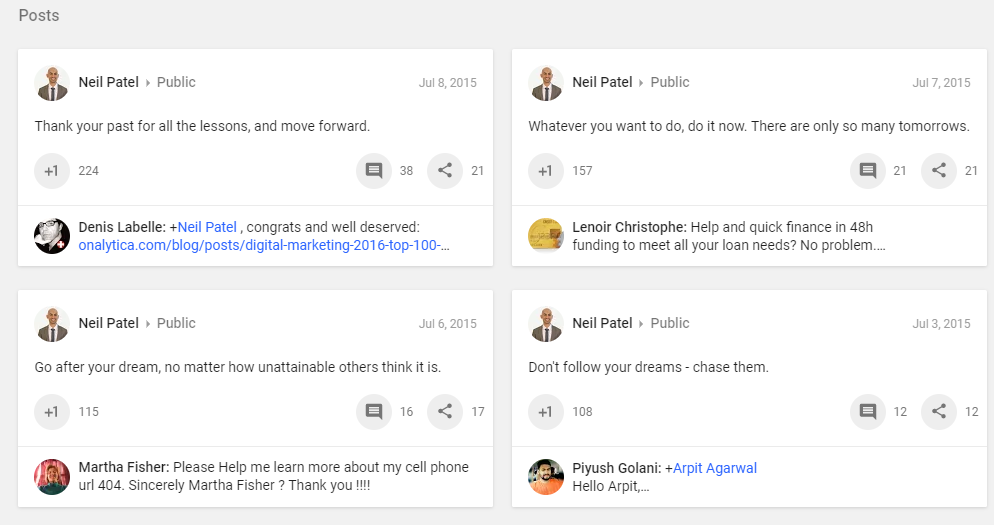
I'm serious! When you're first getting started, you should absolutely experiment with all of the major social media marketing platforms.
People tend to ignore platforms like Pinterest because it's not seen as one of the big 4 (Facebook, Twitter, Instagram, and Snapchat).
But Pinterest has some pretty impressive numbers, especially in terms of their user base.

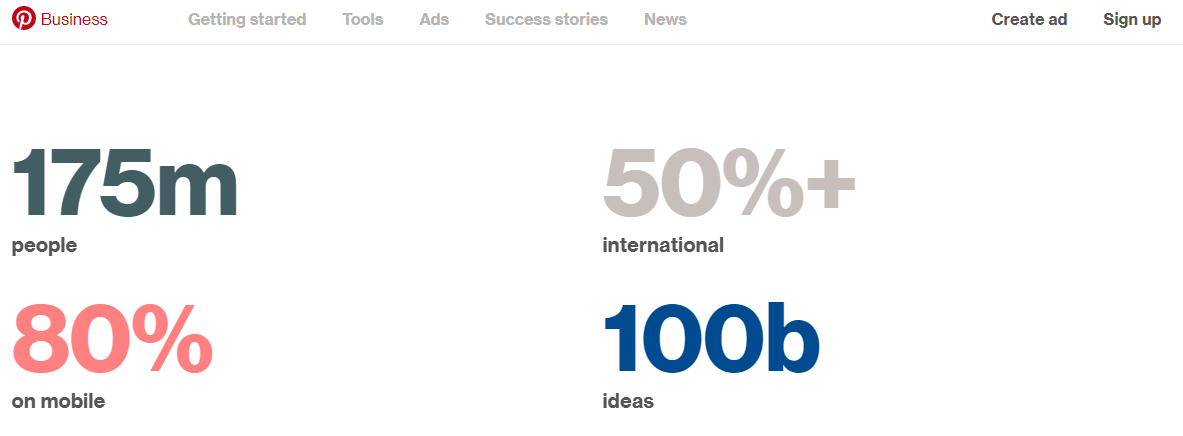
There are plenty of other platforms that are being undervalued simply because people are unwilling to challenge the status quo.
At the beginning, your best bet is to try everything because there's no way to know what'll stick.
And maintain that attitude when new social media platforms start to pop up.
Typically, first adopters are the ones who benefit the most from new platforms thanks to their built in 'authority' status.
But beyond that? Stick with what works.
Track the metrics. Determine not only where most of your audience's attention is, but also where you're getting the best returns on your promotion.
Start curating contentThis one is massive, especially if you're struggling with the demands of content creation.
If you're not familiar with the concept, curating content is relatively straightforward.
All you're doing is finding content that's relevant to your audience and sharing it with them on social media in some fashion.
The issue that most business owners and brands have is that last phrase: 'in some fashion.'
If you didn't know any better, you'd be forgiven for thinking that content curation was all about finding other great blog posts or videos online and reposting them on Twitter or Facebook.
And to be fair, that's absolutely an aspect of content curation.
Just take a look at Elon Musk's Twitter account and you'll see plenty of content curation in this style.

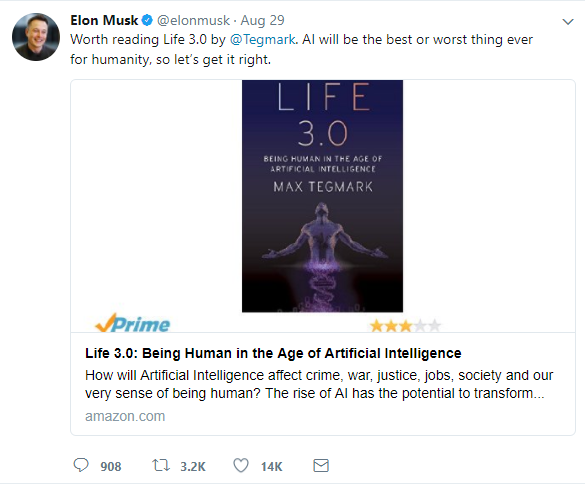
But it's hardly the only type of content curation that exists.
There are actually several different types of content curation, but for the sake of keeping this as simple as possible, we're going to focus on two of them.
The first, of course, being the retweeting and sharing of another industry-relevant piece of content.
My preferred method of content curation is the second type, where you create your own content using the relevant content that you've found.
When it comes to the first type of content curation, I've looked at it as an incomplete solution to the issue of online authority through social media marketing.
Becoming an online authority certainly has its perks, and I'll never fault anyone for doing what they think is best to turn their brand into an industry-leading authority.
But when I see the average brand's curated content, there's usually one thing that tends to stick out to me: The amount of potential that's being wasted.
To understand what I mean, let's try a little thought exercise.
Imagine that we're looking at two companies, company A and company B. They both have the same amount of resources, same online reach, same industry.
You get the idea — they're essentially identical.
Suddenly, out of the blue, a company releases a study on how often you should post to social media!
This is massively relevant to their audiences, and your followers scramble to come up with a way to share this with their audience.
Company A decided to share the link on their Facebook page, which their audience responded to with a bit of interest.
Company B, on the other hand, takes a slightly different approach.
They actually pour over the dat and create an engaging infographic that their audience can look at and use to develop a better understanding of what to do with this information.
If you're wondering what that would look like, here's Buffer doing just that.

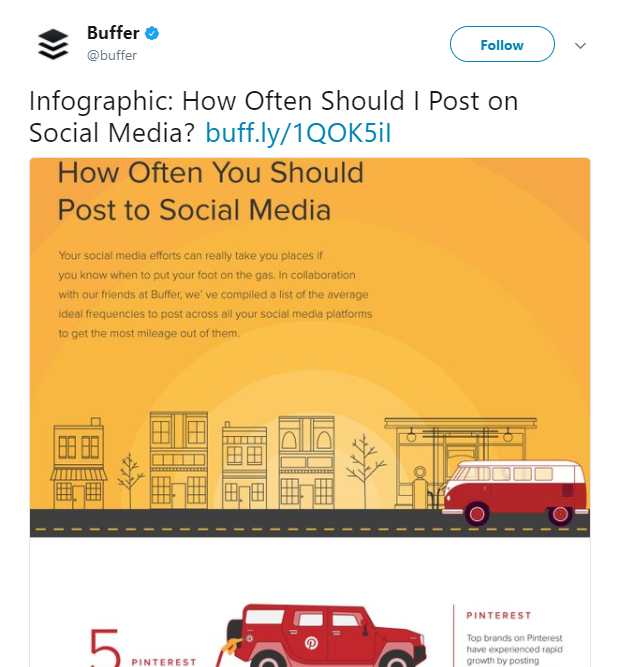
Which of these two companies do you think is going to get more out of this post?
The answer is obvious. Creating an infographic is infinitely more engaging than sharing a link with your followers.
And that's really my point. Content curation in its most basic form is a good tool.
But content curation at its highest level can yield some pretty impressive returns.
You'll already be saving time by not having to come up with the data yourself. Go ahead and take some time to create a truly valuable piece of content for your audience.
Not only will you showcase just how knowledgeable your brand is by being aware of the shifting industry landscape, but you'll also bring a type of value to your audience that is uniquely yours.
ConclusionThere's no one-size-fits-all solution to the issue of creating and executing a social media marketing strategy.
Anyone who tells you that is either oversimplifying the issue or unaware of the complexity that most successful social media campaigns are prone to.
But there are steps that you can take to make the process as efficient and effective as possible.
Learn to embrace the positives of automation, like automated posting on social media. At the same time, make sure you're reinvesting that saved time in ways to market more efficiently.
Build content that'll stand the test of time by reverse engineering your audience's problems and actually giving them content that's valuable to them no matter when they read it.
Avoid spreading yourself too thin. Even if you can post everywhere automatically, remember that all social media platforms are not created equally.
And if you can't afford to post everywhere, then don't even think about it!
Make sure that you're curating content to save time on content creation, but make an effort to provide your own unique value to whatever you post.
Combining all these steps may not instantly fix all of your social media marketing problems, but I'd say that it's a pretty good place to start.
What have you done this year to simplify your social media marketing efforts?
Source: 4 Efficient Ways to Simplify Your Social Media Marketing Efforts
No comments:
Post a Comment